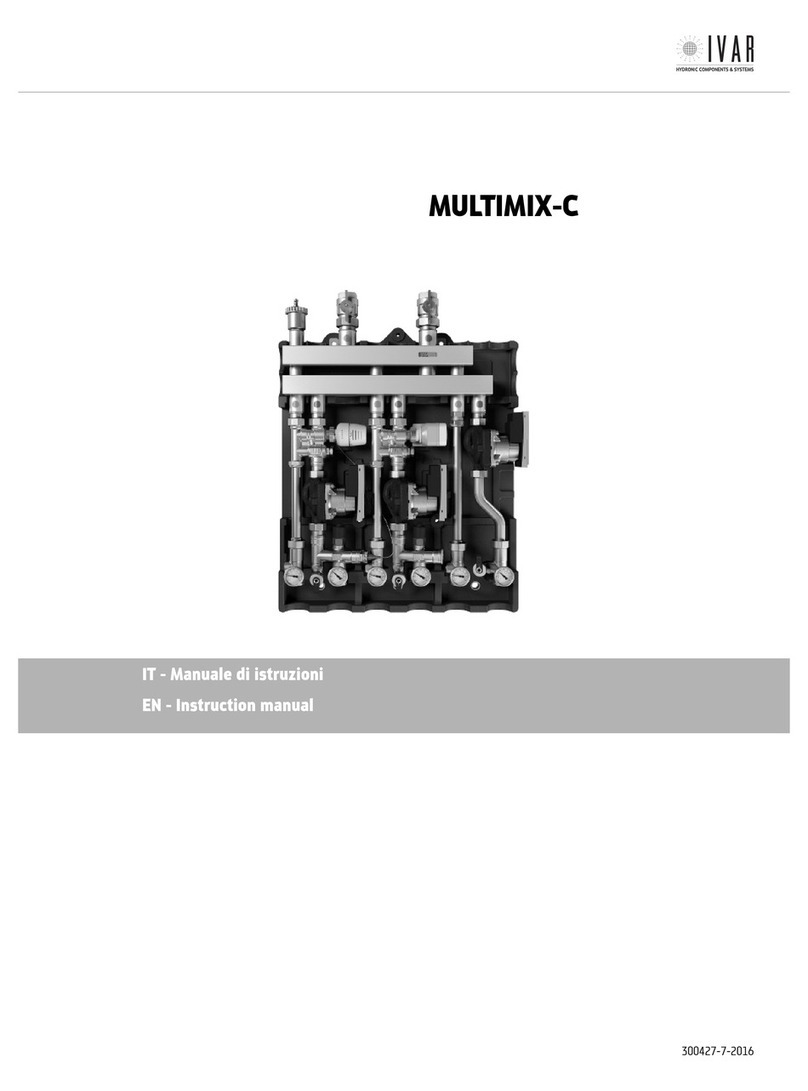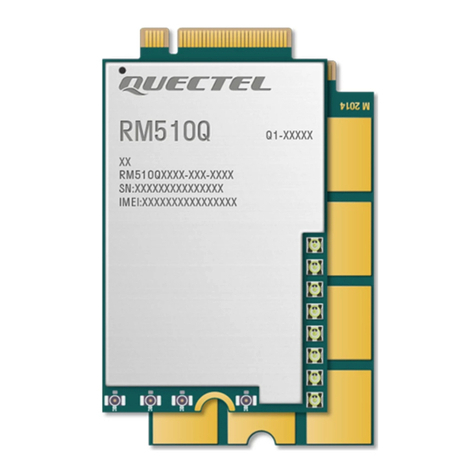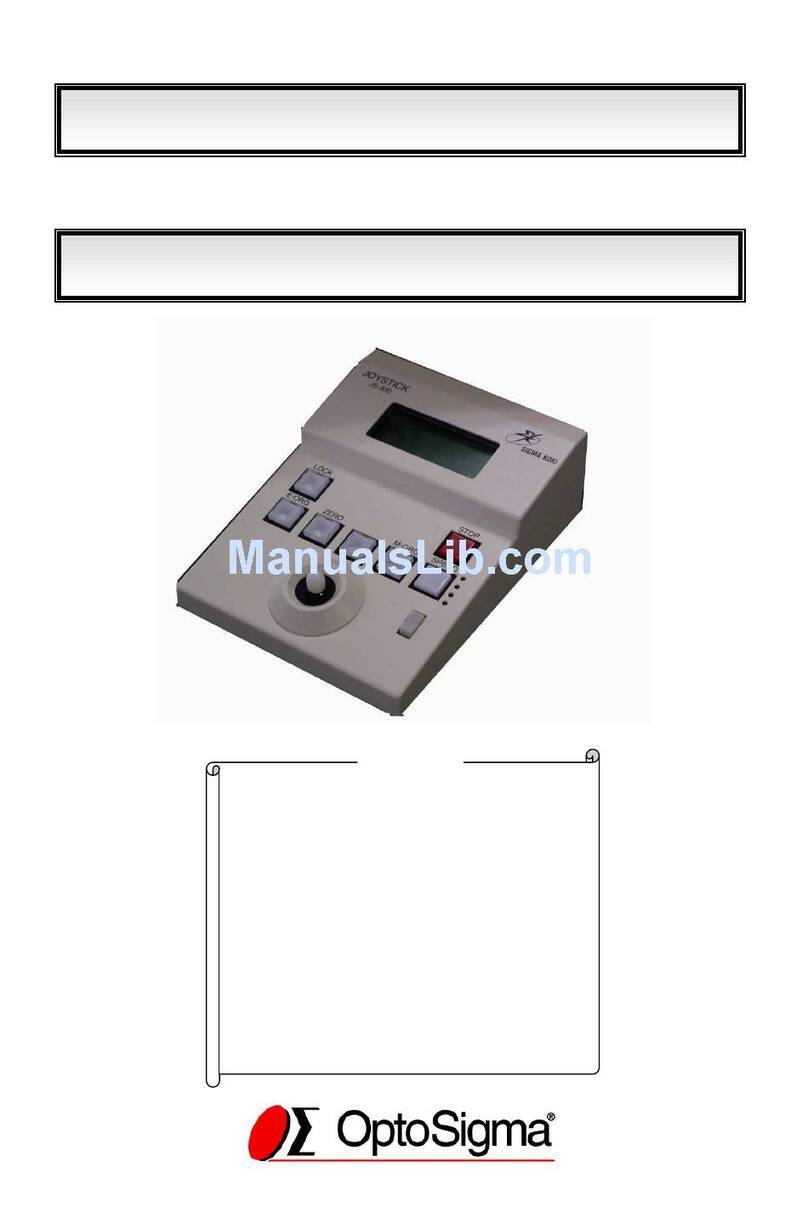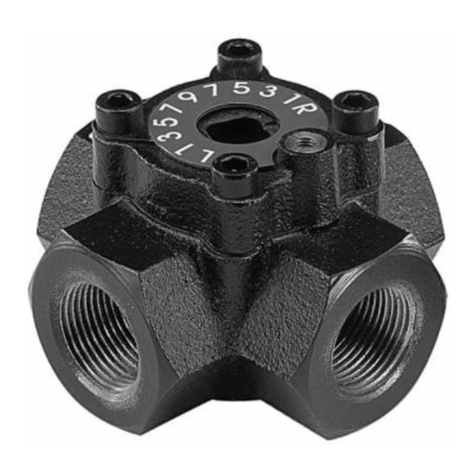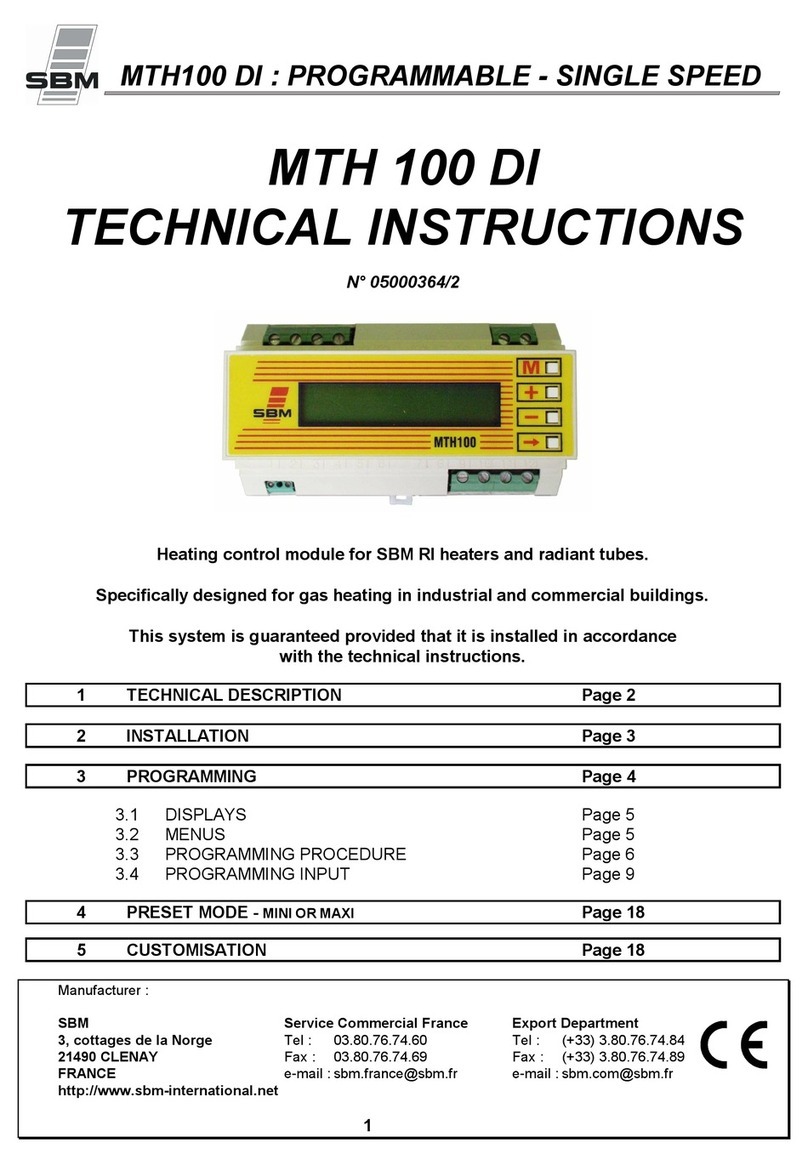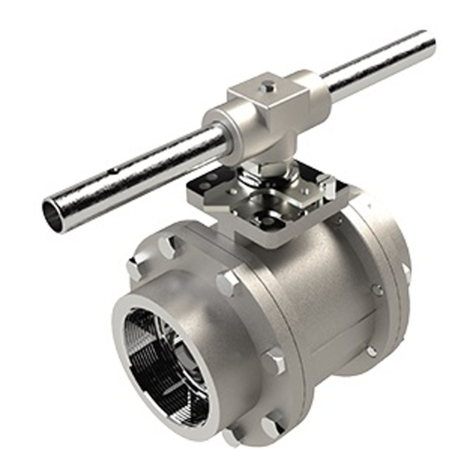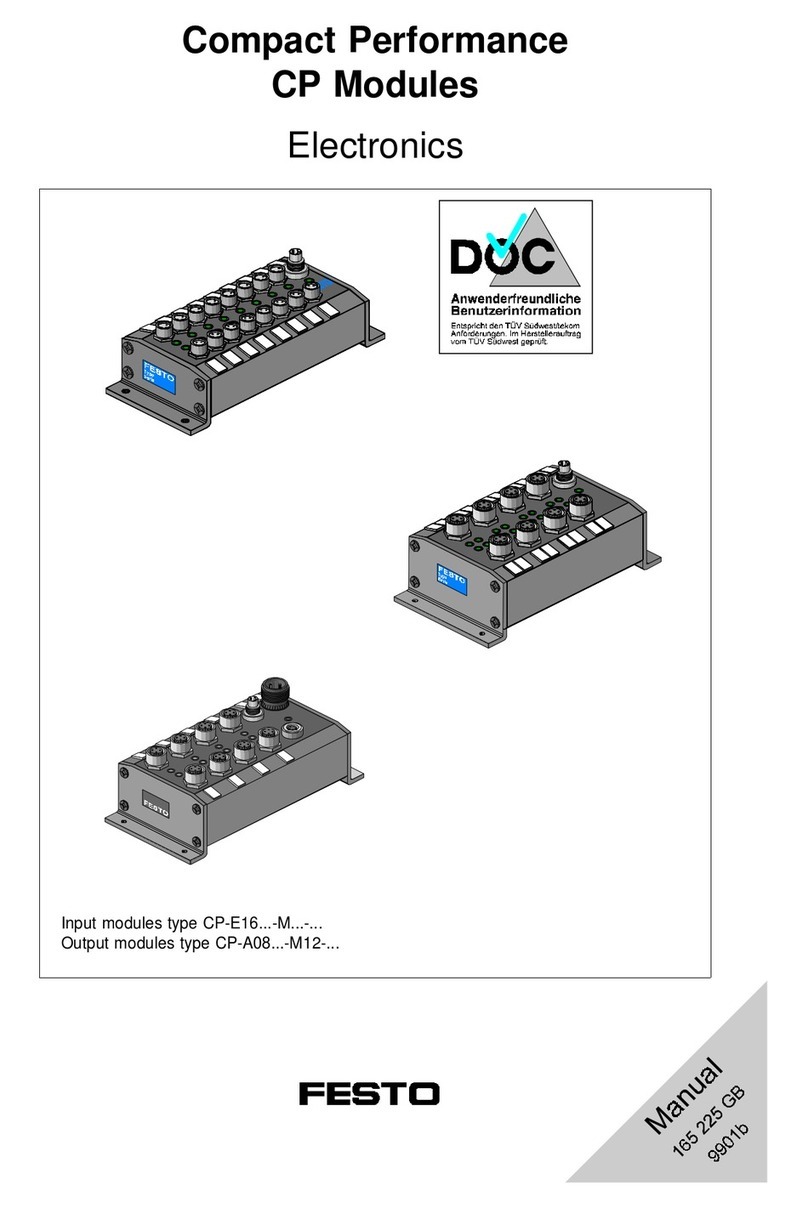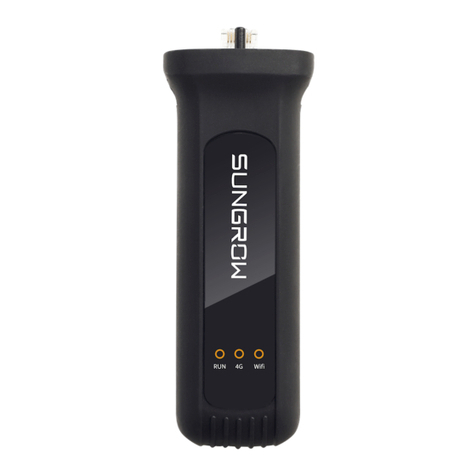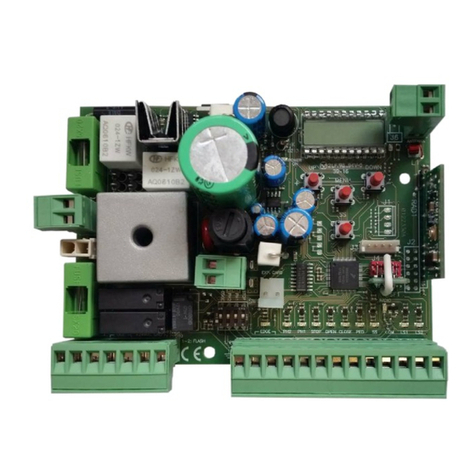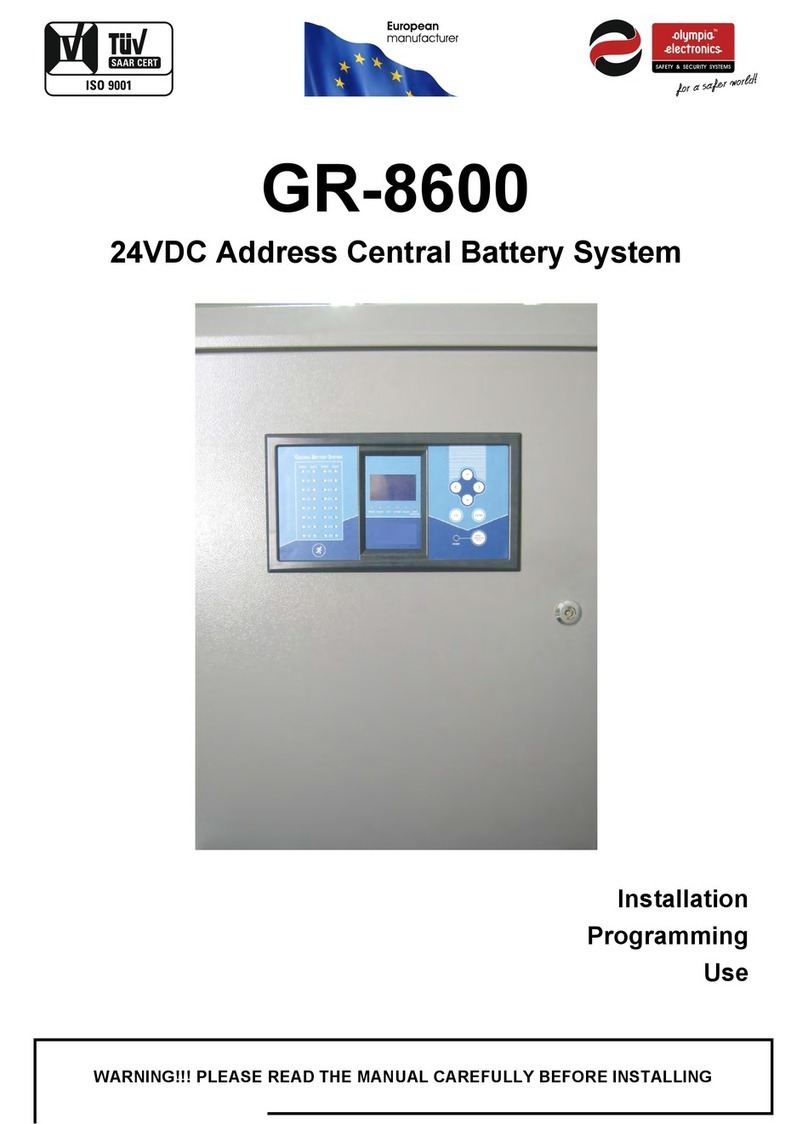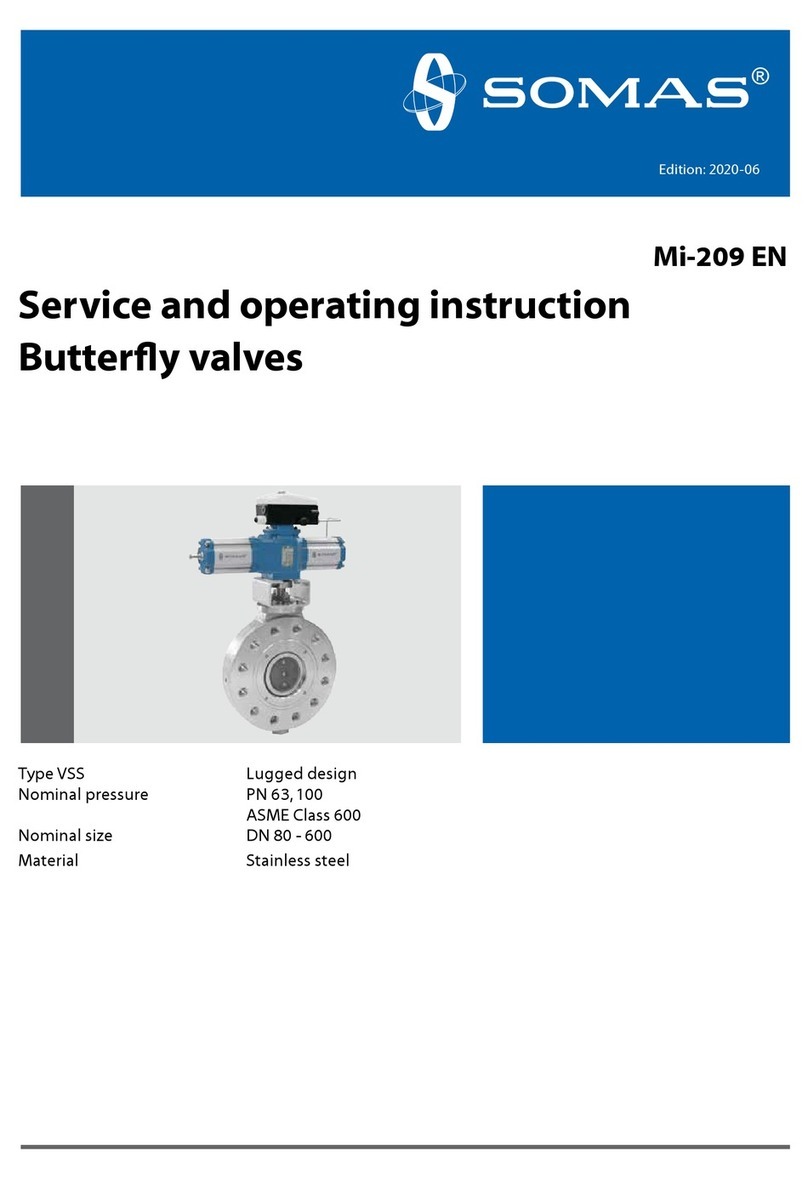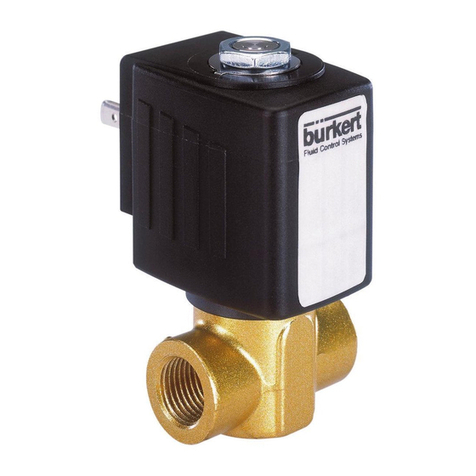WEST PQP-171-P Guide

Technical Documentation
PQP-171-P
Universal pump control module

Page 2 of 34 PQP-171-P 05.06.2020
CONTENTS
1General Information.................................................................................................................................................4
1.1 Order number................................................................................................................................................. 4
1.2 Scope of supply.............................................................................................................................................. 4
1.3 Accessories.................................................................................................................................................... 4
1.4 Symbols used................................................................................................................................................. 5
1.5 Legal notice.................................................................................................................................................... 5
1.6 Safety instructions.......................................................................................................................................... 6
2Characteristics.........................................................................................................................................................7
2.1 Device description.......................................................................................................................................... 8
3Use and application.................................................................................................................................................9
3.1 Installation instructions ................................................................................................................................... 9
3.2 Typical system structure............................................................................................................................... 10
3.3 Method of operation...................................................................................................................................... 10
3.4 Commissioning............................................................................................................................................. 12
4Technical description.............................................................................................................................................13
4.1 Input and output signals ............................................................................................................................... 13
4.2 LED definitions ............................................................................................................................................. 13
4.3 Circuit diagram ............................................................................................................................................. 14
4.4 Typical wiring................................................................................................................................................ 15
4.5 Connection examples................................................................................................................................... 15
4.6 Technical data.............................................................................................................................................. 16
5Parameters............................................................................................................................................................17
5.1 Parameter overview...................................................................................................................................... 17
5.2 Basic parameters.......................................................................................................................................... 19
5.2.1 LG (Changing the language).................................................................................................................19
5.2.2 MODE (Parameter view).......................................................................................................................19
5.2.3 FIXCURR (Fix output value).................................................................................................................19
5.2.4 CTRLMODE (Control function) .............................................................................................................19
5.2.5 CCMODE (Characteristics linearization)...............................................................................................20
5.2.6 SENS (Malfunction monitor) .................................................................................................................20
5.2.7 EOUT (Output signal if not ready).........................................................................................................20
5.3 InSignal adaptation....................................................................................................................................... 21
5.3.1 SIGNAL (Type of input signal)..............................................................................................................21
5.3.2 N_RANGE:X (Sensor nominal pressure)..............................................................................................21
5.3.3 OFFSET:X (Sensor offset)....................................................................................................................21
5.3.4 RA (Command signal ramp time)..........................................................................................................22
5.3.5 CC (Characteristics linearization) .........................................................................................................23
5.4 Control parameters....................................................................................................................................... 24
5.4.1 PID controller........................................................................................................................................24
5.4.2 Integrator control function.....................................................................................................................25
5.4.3 C_EXT (Extended control parameters).................................................................................................25
5.5 Output signal adaptation............................................................................................................................... 26
5.5.1 MIN (Deadband compensation)............................................................................................................26
5.5.2 MAX (Output scaling)............................................................................................................................26
5.5.3 TRIGGER (Response threshold for the MIN parameter) ......................................................................26
5.5.4 SIGNAL:U (Output polarity) ..................................................................................................................27
5.6 Power stage.................................................................................................................................................. 28
5.6.1 CURRENT (Rated solenoid current).....................................................................................................28
5.6.2 DFREQ (Dither frequency)....................................................................................................................28
5.6.3 DAMPL (Dither amplitude)....................................................................................................................28

Page 3 of 34 PQP-171-P 05.06.2020
5.6.4 PWM (PWM Frequency)...................................................................................................................... 29
5.6.5 ACC (Current loop auto adjustment).................................................................................................... 29
5.6.6 PPWM (P gain of the current loop) ...................................................................................................... 29
5.6.7 IPWM (I gain of the current loop)......................................................................................................... 29
5.7 Special commands ....................................................................................................................................... 30
5.7.1 AINMODE (Scaling mode)................................................................................................................... 30
5.7.2 AIN (Analogue input scaling)................................................................................................................ 30
5.8 PROCESS DATA (Monitoring)...................................................................................................................... 31
6Appendix............................................................................................................................................................... 32
6.1 Failure monitoring......................................................................................................................................... 32
6.2 Troubleshooting............................................................................................................................................ 32
7Notes.................................................................................................................................................................... 34

Page 4 of 34 PQP-171-P 05.06.2020
1 General Information
1.1 Order number
PQP-171-P - pump control module with integrated power output stage up to 2,6 A and analouge
sensor interface
1.2 Scope of supply
The scope of supply includes the module plus the terminal blocks which are part of the housing.
The Profibus plug, interface cables and further parts which may be required should be ordered separately.
This documentation can be downloaded as a PDF file from www.w-e-st.de.
1.3 Accessories
WPC-300 - Start-Up-Tool (downloadable from our homepage –products/software)
Any standard cable with USB-A and USB-B connector can be used as the programming cable.

Page 5 of 34 PQP-171-P 05.06.2020
1.4 Symbols used
General information
Safety-related information
1.5 Legal notice
W.E.St.
Elektronik GmbH
Gewerbering 31
D-41372 Niederkrüchten
Tel.: +49 (0)2163 577355-0
Fax.: +49 (0)2163 577355-11
Home page: www.w-e-st.de
EMAIL: contact@w-e-st.de
Date: 05.06.2020
The data and characteristics described herein serve only to describe the product. The user is required to
evaluate this data and to check suitability for the particular application. General suitability cannot be inferred
from this document. We reserve the right to make technical modifications due to further development of the
product described in this manual. The technical information and dimensions are non-binding. No claims may
be made based on them.
This document is copyright.

Page 6 of 34 PQP-171-P 05.06.2020
1.6 Safety instructions
Please read this document and the safety instructions carefully. This document will help to define the product
area of application and to put it into operation. Additional documents (WPC-300 for the start-up software) and
knowledge of the application should be taken into account or be available.
General regulations and laws (depending on the country: e. g. accident prevention and environmental
protection) must be complied with.
These modules are designed for hydraulic applications in open or closed-loop control circuits.
Uncontrolled movements can be caused by device defects (in the hydraulic module or the
components), application errors and electrical faults. Work on the drive or the electronics must
only be carried out whilst the equipment is switched off and not under pressure.
This handbook describes the functions and the electrical connections for this electronic
assembly. All technical documents which pertain to the system must be complied with when
commissioning.
This device may only be connected and put into operation by trained specialist staff. The
instruction manual must be read with care. The installation instructions and the commissioning
instructions must be followed. Guarantee and liability claims are invalid if the instructions are
not complied with and/or in case of incorrect installation or inappropriate use.
CAUTION!
All electronic modules are manufactured to a high quality. Malfunctions due to the failure of
components cannot, however, be excluded. Despite extensive testing the same also applies
for the software. If these devices are deployed in safety-relevant applications, suitable external
measures must be taken to guarantee the necessary safety. The same applies for faults which
affect safety. No liability can be assumed for possible damage.
Further instructions
The module may only be operated in compliance with the national EMC regulations. It is
the user’s responsibility to adhere to these regulations.
The device is only intended for use in the commercial sector.
When not in use the module must be protected from the effects of the weather,
contamination and mechanical damage.
The module may not be used in an explosive environment.
To ensure adequate cooling the ventilation slots must not be covered.
The device must be disposed of in accordance with national statutory provisions.

Page 7 of 34 PQP-171-P 05.06.2020
2 Characteristics
This module is used as universal closed loop control module, e.g. for displacement swivel angel control. It has
an integrated power amplifier for proportional valves. Several setting parameters offer optimal adaption to the
valve. The controller runs with a loop time of 1 ms and the amplifier with 0,125 ms for the current control.
The command value and the feedback value are driven by scalable analogue signals (range 0… 10V or 4…
20mA). Ramp function and PID controller can be used universal. The output current is closed loop controlled
and therefore independent from the supply voltage and a varying solenoid resistance. The output stage is ca-
ble broken monitored and switches off in case of detected error.
Programmable are the following control parameters: SC, P, I, D, T1 and LIM for the integrator limitation as well
as different static settings and valve adjustments for the power stage like MIN, MAX, DITHER (in frequency
and amplitude) and the PWM frequency.
By the free parameterization of the power stage all typical proportional valves of the different manufactures
can be optimal adapted.
Because of the easy handling a very short training period is guaranteed.
Typical applications: General pressure control with pressure valves (direct or via a servo pump).
Features
Universal pump control module for proportional directional valves
Compact housing
Digital reproducible adjustments
Free scaling of the analogue input signals
Universal PID controller
Free parameterization of ramps, MIN and MAX, DITHER (frequency and amplitude) and
PWM frequency
Output current up to 2,6 A
Adaptable to all standard proportional valves
Application orientated parameter settings
Fault diagnosis and extended function checking
Simplified parameterization with WPC-300 software

Page 8 of 34 PQP-171-P 05.06.2020
2.1 Device description
V:
ID:
Add.:Date:
Made in Germany
W.E.ST.
Ready
1 2 3 4
5 6 7 8
910 11 12
14 15 1613
D-41372 Niederkrüchten
Homepage: http://www.w-e-st.de
W.E.ST.
Elektronik
13 14 15
910 11 12
16
A B
Klemmblöcke (steckbar)
Terminals (removable)
LEDs
USB
Interface
Typenschild undAnschlussbelegung
Type plate and terminal pinassignment
23,0000 mm99,0000 mm
114,0000 mm

Page 9 of 34 PQP-171-P 05.06.2020
3 Use and application
3.1 Installation instructions
This module is designed for installation in a shielded EMC housing (control cabinet). All cables which
lead outside must be screened; complete screening is required. It is also necessary to avoid strong
electro-magnetic interference sources being installed nearby when using our open and closed loop
control modules.
Typical installation location: 24 V control signal area (close to PLC)
The devices must be arranged in the control cabinet so that the power section and the signal section
are separate from each other.
Experience shows that the installation place close to the PLC (24 V area) is most suitable. All digital
and analogue inputs and outputs are fitted with filters and surge absorbers in the device.
The module should be installed and wired in accordance with the documentation bearing in mind EMC
principles. If other consumers are operated with the same power supply, a star-shaped ground wiring
scheme is recommended. The following points must be observed when wiring:
The signal cables must be laid separately from power cables.
Analogue signal cables must be screened.
All other cables must be screened if there are powerful interference sources (frequency
converters, power contactors) and cable lengths > 3 m. Inexpensive SMD ferrites can be
used with high-frequency radiation.
The screening should be connected to PE (PE terminal) as close to the module as
possible. The local requirements for screening must be taken into account in all cases. The
screening should be connected to at both ends. Equipotential bonding must be provided
where there are differences between the connected electrical components.
If having longer lengths of cable (> 10 m), the diameters and screening measures should
be checked by specialists (e. g. for possible interference, noise sources and voltage drop).
Special care is required if using cables of over 40 m in length, and if necessary the
manufacturer should be consulted if necessary.
A low-resistance connection between PE and the mounting rail should be provided. Transient
interference is transmitted from the module directly to the mounting rail and from there to the local
earth.
Power should be supplied by a regulated power supply unit (typically a PELV system complying with
IEC364-4-4, secure low voltage). The low internal resistance of regulated power supplies gives better
interference voltage dissipation, which improves the signal quality of high-resolution sensors in
particular. Switched inductances (relays and valve coils) which are connected to the same power
supply must always be provided with appropriate overvoltage protection directly at the coil.

Page 10 of 34 PQP-171-P 05.06.2020
3.2 Typical system structure
This minimal system consists of the following components:
(*1) Swivel angel adjustment
(*2) Servo pump
(*3) Swivel angel sensor
(*4) Pump controller PQP-171-P
(*5) Interface to PLC
3.3 Method of operation
This swivel angel controller is driven via an analogue signal. The ENABLE signal (typical 24 V) activates the
functionality and reports this at a READY output if no error occurs.
In case of malfunction the power stage gets deactivated and the error is reported by a deactivated READY
output and a flashing READY LED.
The output is current controlled whereby a high accuracy and a good dynamic is obtained.
In this system the speed of the cylinder is adjusted by the swivel angel of the pump. Because of the relatively
pressure independent volume flow compared to a throttle control with a proportional valve the actuator can be
driven by relative continual speed.
The system is realized by an electro-hydraulic control equipment controlled by our module. As feedback the
swivel angel is measured and send back to the module.
Via a modified and optimized PID controller the behavior can be adapted to the respective pump.
The valve controlling can be switched between such with one solenoid and also two solenoids (shown on pic-
tures 1 and 2).

Page 12 of 34 PQP-171-P 05.06.2020
3.4 Commissioning
Step
Task
Installation
Install the device in accordance with the circuit diagram. Ensure it is wired cor-
rectly and that the signals are well shielded. The device must be installed in a
protective housing (control cabinet or similar).
Switching on for the first time
Ensure that no unwanted movement is possible in the drive (e. g. switch off the
hydraulics). Connect an ammeter and check the current consumed by the de-
vice. If it is higher than specified, there is an error in the wiring. Switch the de-
vice off immediately and check the wiring.
Setting up communication
Once the power input is correct the PC (notebook) should be connected to the
serial interface. Please see the WPC-300 program documentation for how to
set up communication.
The operating software supports further commissioning and diagnosis.
Pre-parameterization
Parameterize now (with the help of the system redundancy and the connection
diagram) the following parameters:
The NOMINAL PRESSURE for the ANALOGUE INPUTS. See specifications of
the system and the sensors.
The output CURRENT and the typical valve parameter DITHER and MIN/MAX.
Pre-parameterization is necessary to minimize the risk of an unintentional
movement / pressure.
Control signal
Check the control signal (output signal). The control signal (solenoid current)
lies in the range of 0... 2,6 A. In the current state it should show around 0 A.
CAUTION! This signal depends on the EOUT setting.
Switching on the hydraulics
The hydraulics can now be switched on. The module is not yet generating a
signal. Drives should be at a standstill or drift slightly (leave its position at a
slow speed).
Activating ENABLE
CAUTION! The power stage gets activated.
The controller can now be driven by the analogue command value. The feed-
back value is read in and the output signal gets calculated by means of the
control deviation and the parameterization.
Controller optimization
Now optimize the settings. The PID parameters have to be adapted depending
on the application.

Page 13 of 34 PQP-171-P 05.06.2020
4 Technical description
4.1 Input and output signals
4.2 LED definitions
LEDs
Description of the LED function
GREEN
Identical to the READY output.
OFF: No power supply or ENABLE is not activated
ON: System is ready for operation
Flashing: Error discovered
YELLOW A
Intensity of the current at solenoid A
YELLOW B
Intensity of the current at solenoid B
GREEN +
YELLOW A
1. Chasing light (over all LEDs): The bootloader is active. No normal functions are
possible.
2. All LEDs flash shortly every 6 s: An internal data error was detected and corrected
automatically! The module still works regularly. To acknowledge the error the module
has to be cycle powered.
YELLOW A +
YELLOW B
Both yellow LEDs flash oppositely every 1 s: The nonvolatile stored parameters are in-
consistent! To acknowledge the error, data has to be saved with the SAVE command or
the corresponding button in the WPC.
Connection
Supply
PIN 7
Power supply (see technical data)
PIN 8
0 V (GND) connection.
Connection
Analogue signals
PIN 9 / 10
Command value (WA), signal range 0… 10 V or 4… 20 mA, scalable
PIN 13 /14
Feedback value (X), signal range 0… 10 V or 4… 20 mA, scalable
PIN 11
0 V (GND) connection for analogue signals
PIN 12
8V reference voltage output
Connection
Solenoids
PIN 2 / 1
PWM output solenoid B
PIN 3 / 4
PWM output solenoid A
Connection
Digital inputs and outputs
PIN 15
ENABLE input:
Generally enabling of the application. Activates controller, power stage and READY.
PIN 6
FIXCURRENT input:
ON: Direct control of the power stage via the FIXCURR parameter.
OFF: Swivel angel control is active (normal state).
PIN 5
READY output:
ON: The module is enabled; there are no discernable errors.
OFF: ENABLE is not available or an error has been detected.

Page 14 of 34 PQP-171-P 05.06.2020
4.3 Circuit diagram
2
Input
PE via DIN-RAIL
3
4
1
5
15
Ready
Enable
Fixcurr
Digital Output
USB type B
PQP-171-P
6
13
Valve
adaption
Digital Input
u
Control program
Ramp
function PID
control
function
ia
ib
to solenoidA
c
wa
x
12
GND
+Ub
8
7
DC
DC
to solenoid B
Power
supply
Power
stage
Digital Input
Reference
voltage
14
11
Setpoint
Actual
value
Scaling
Input
Scaling
9
10
Differetial Input
we
+
-

Page 15 of 34 PQP-171-P 05.06.2020
4.4 Typical wiring
Enable
8765
16151413
1211109
Analogue command signal
Solenoid
4321
0V
Shield
PE
Power Supply
0V
12 V / 24 V
+
-
Feedback signal
+
Reference voltage output
Ready
A
Solenoid B
FC
Digital input
output
PE
0V
0V
4.5 Connection examples
8V PIN 12
GND PIN 11
+In PIN 9
-In PIN 10
Potentiometer / Joystick
+In PIN 9
-In PIN 10
SPS / PLC 0... 10 V/ +/- 10 V
8V PIN 12
GND PIN 11
+In PIN 9
-In PIN 10
Joystick
4... 20 mA input
+In PIN 9 + 13
-In PIN 10 + 14
GND PIN 11
Alternative 3 –wire connection of two solenoids:
Example.: Hawe valves
3
4
1
2
A-Solenoid
B-Solenoid

Page 16 of 34 PQP-171-P 05.06.2020
4.6 Technical data
Supply voltage (Ub)
Current requirement
External protection
[VDC]
[mA]
[A]
12… 30 (incl. ripple)
30 + solenoid current
3 medium time lag
Reference output
Voltage
Max. load
[V]
[mA]
8
25
Digital inputs
OFF
ON
Input resistance
[V]
[V]
[kOhm]
< 2
> 10
25
Digital outputs
OFF
ON
Max. output current
[V]
[V]
[mA]
< 2
max. Vcc
50
Analog inputs:
Voltage
Input resistance
Current
Burden
Signal resolution
[V]
[kOhm]
[mA]
[Ohm]
[%]
Unipolar / differential
0… 10 / -10… 10
min. 90
4… 20
390
0,03
PWM output
Max. output current
Frequency
[A]
[Hz]
Wire break and short circuit monitored
2,6
61… 2604 selectable in defined steps
Controller cycle times
Solenoid current control
Signal processing
[µs]
[ms]
125
1
Serial interface
Transmission rate
-
[kBaud]
USB - virtual COM Port
9,6… 115,2
Housing
Material
Flammability class
Snap-on module acc. EN 50022
PA 6.6 polyamide
V0 (UL94)
Weight
[kg]
0,13
Protection class
Temperature range
Storage temperature
Humidity
Vibration resistance
[IP]
[°C]
[°C]
[%]
-
20
-20… 60
-20… 70
< 95 (non-condensing)
IEC 60068-2-6 (Category C)
Connections
Communication
Plug connectors
PE
-
USB type B
4 x 4-pole terminal blocks
via the DIN mounting rail
EMC
EN 61000-6-2: 8/2005
EN 61000-6-4: 6/2007 + A1:2011

Page 17 of 34 PQP-171-P 05.06.2020
5 Parameters
5.1 Parameter overview
Group
Command
Default
Unit
Description
Basic parameters
LG
EN
-
Changing language help texts
MODE
STD
-
Parameter view
FIXCURR
Fix output value for corresponding digital input
CTRLMODE
OL
-
Closed loop (CL) or open loop (OL) control.
CCMODE
OFF
-
Activation / deactivation of the CC function.
SENS
ON
-
Malfunction monitor
EOUT
0
0.01 %
Output signal if not ready
Input signal adaptation
Sensor scaling
SIGNAL:X
U0-10
V
Type of input
N_RANGE:X
100
%
Sensor working range in relation to system working range
OFFSET:X
0
0.01 %
Sensor offset
Command signal scaling
SIGNAL:W
U0-10
mbar
Type of input
Ramp function
RA:UP
RA:DOWN
100
100
ms
ms
Command signal ramp times
Characteristic linearization
CC
X Y
0,01 %
X Y parameter for up to 10 points.
Control parameters
PID controller
C:P
C:I
C:D
C:D_T1
C:OFFSET
100
4000
0
500
0
0.01
0.1 ms
0.1 ms
0.1 ms
0.01 %
P gain
I gain
D gain
D gain filter
Direct control
Integrator control
C:I_LIM
2500
0.01 %
Integrator limitation
Extended control parameter
C_EXT:P
C_EXT:T1
C_EXT_FF
0
200
0
0.01
0.1 ms
0.01 %
P gain
P gain filter
Feed forward
Output signal adaptation
MIN:A
MIN:B
0
0
0.01 %
0.01 %
Deadband compensation
MAX:A
MAX:B
10000
10000
0.01 %
0.01 %
Output scaling
TRIGGER
200
0.01 %
Deadband compensation trigger point
SIGNAL:U
1S+
-
Type and polarity of the output

Page 18 of 34 PQP-171-P 05.06.2020
Group
Command
Default
Unit
Description
Parameters of the power stage
CURRENT
1000
mA
Rated solenoid current
DFREQ
121
Hz
Dither frequency
DAMPL
500
0.01 %
Dither amplitude
PWM
2604
Hz
PWM frequency
ACC
ON
-
Current loop auto adjustment
PPWM
IPWM
7
40
-
-
P-Gain of the current loop
I-Gain of the current loop
Special commands
Scaling mode
AINMODE
EASY
-
Input scaling mode
AIN:X
AIN:W
A: 1000
B: 1000
C: 0
X: V
-
-
0.01 %
-
Free scaling of the analogue inputs. Gets activated when
AINMODE is switched over to MATH.

Page 19 of 34 PQP-171-P 05.06.2020
5.2 Basic parameters
5.2.1 LG (Changing the language)
Command
Parameters
Unit
Group
LG x
x= DE|EN
-
STD
Either German or English can be selected for the help texts.
CAUTION: After changing the language settings, the ID button in the menu bar (WPC-300) must be
pressed (module identification).
5.2.2 MODE (Parameter view)
Command
Parameters
Unit
Group
MODE x
x= STD|EXP
-
STD
This command changes the operating mode. Various commands (defined via STD/EXP) are blanked out in
Standard Mode. The commands in Expert Mode have a more significant influence on system behavior and
should accordingly be changed with care.
5.2.3 FIXCURR (Fix output value)
Command
Parameters
Unit
Group
FIXCURR x
x= -10000… 10000
0.01 %
STD
This command changes the operating mode. Various commands (defined via STD/EXP) are blanked out in
Standard Mode. The commands in Expert Mode have a more significant influence on system behavior and
should accordingly be changed with care.
5.2.4 CTRLMODE (Control function)
Command
Parameters
Unit
Group
CTRL x
x= OL|CL
-
STD
Switching the control function between OL (open loop) for direct control of the solenoid current and
CL (closed loop) for using extended PID controller with feedback sensor.

Page 20 of 34 PQP-171-P 05.06.2020
5.2.5 CCMODE (Characteristics linearization)
Command
Parameter
Unit
Group
CCMODE X
x= ON|OFF
-
EXP
This command activates the characteristic linearization function. Deactivating immediately allows an easy and
fast evaluation of the linearization.
5.2.6 SENS (Malfunction monitor)
Command
Parameters
Unit
Group
SENS x
x= ON|OFF|AUTO
-
STD
This command is used to activate/deactivate the monitoring functions (4… 20 mA sensors, output current, sig-
nal range and internal failures) of the module.
ON: All monitoring functions are active. Detected failures can be reset by deactivating the ENABLE in-
put.
OFF: No monitoring function is active.
AUTO: Auto reset mode. All monitoring functions are active. If the failure doesn’t exist anymore, the mod-
ule automatically resumes to work.
Normally the monitoring functions are always active because otherwise no errors are detectable via
the READY output. Deactivating is possible mainly for troubleshooting.
5.2.7 EOUT (Output signal if not ready)
Command
Parameters
Unit
Group
EOUT X
x= -10000… 10000
0.01 %
EXP
Output value in case of a detected error or a deactive ENABLE input. A value (degree of valve opening) for
use in the event of a sensor error (or the module is disabled) can be defined here. This function can be used if,
for example, the drive is to move to one of the two end positions (at the specified speed) in case of a sensor
error.
|EOUT| = 0 The output is switched off in the event of an error. This is normal behavior.
CAUTION!
The output value defined here is stored permanently (independently of the parameter set). The
effects should be analyzed by the user for each application from the point of view of safety.
Table of contents
Popular Control Unit manuals by other brands

RIB
RIB R10-CRX manual
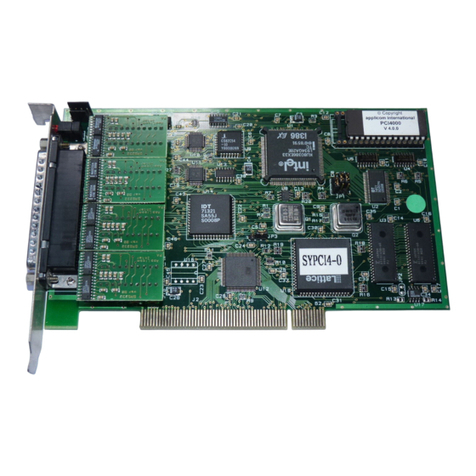
Woodhead
Woodhead applicom PCI4000 manual
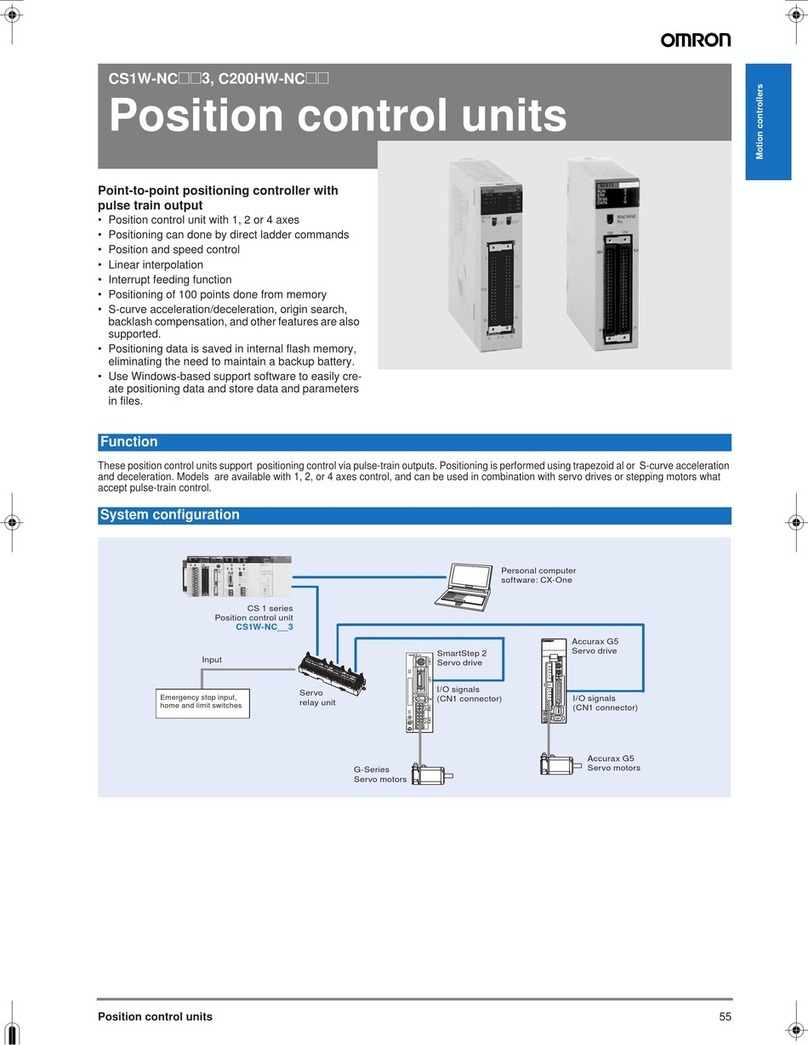
Omron
Omron CS1W-NC113 - REV 02-2008 datasheet
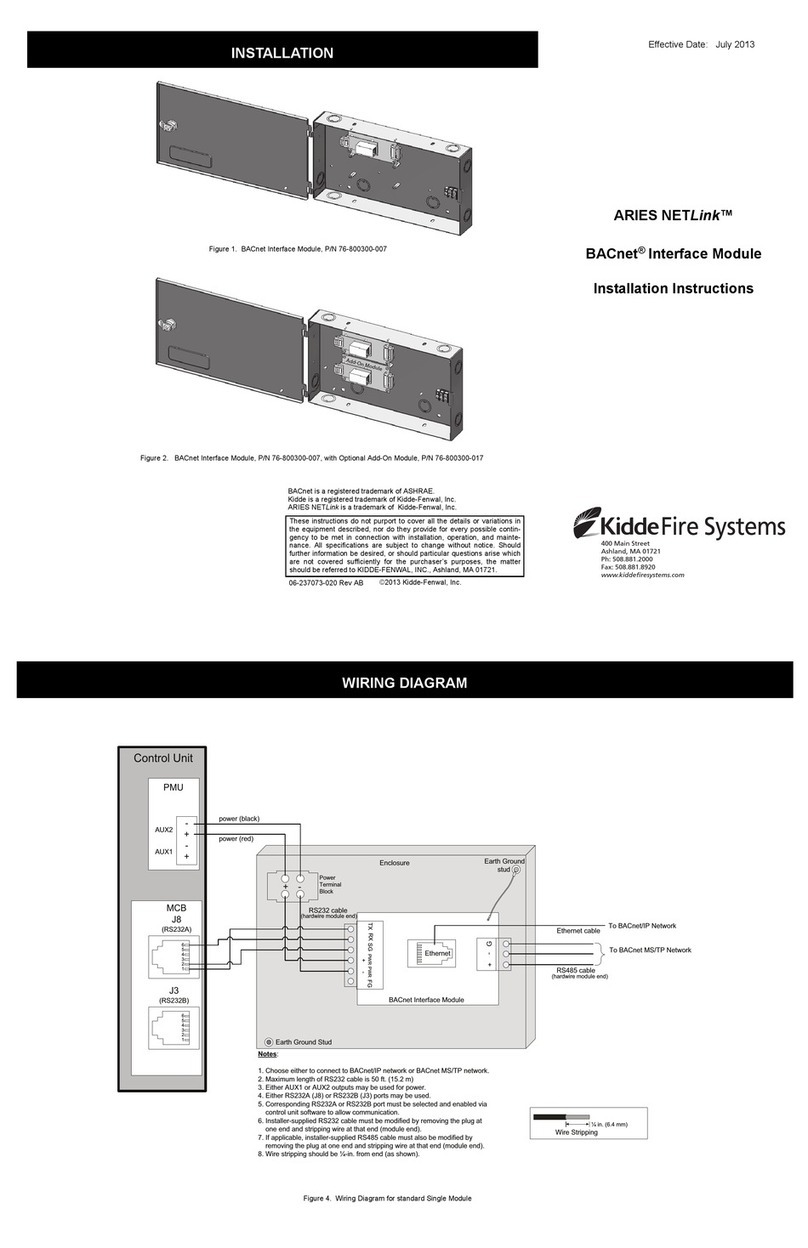
Kidde Fire Systems
Kidde Fire Systems ARIES NETLink 76-800300-007 installation instructions

Emerson
Emerson KTM Hindle Operation, installation & maintenance instructions
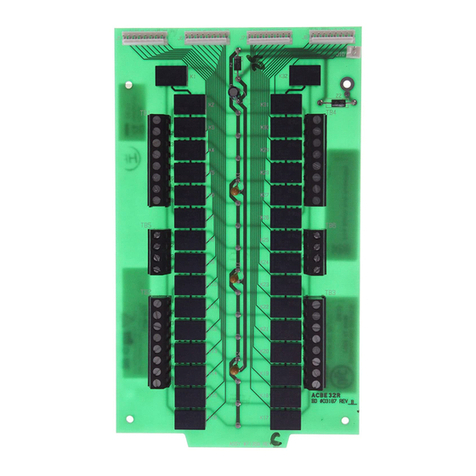
Notifier
Notifier LDM-32 Installation sheet

